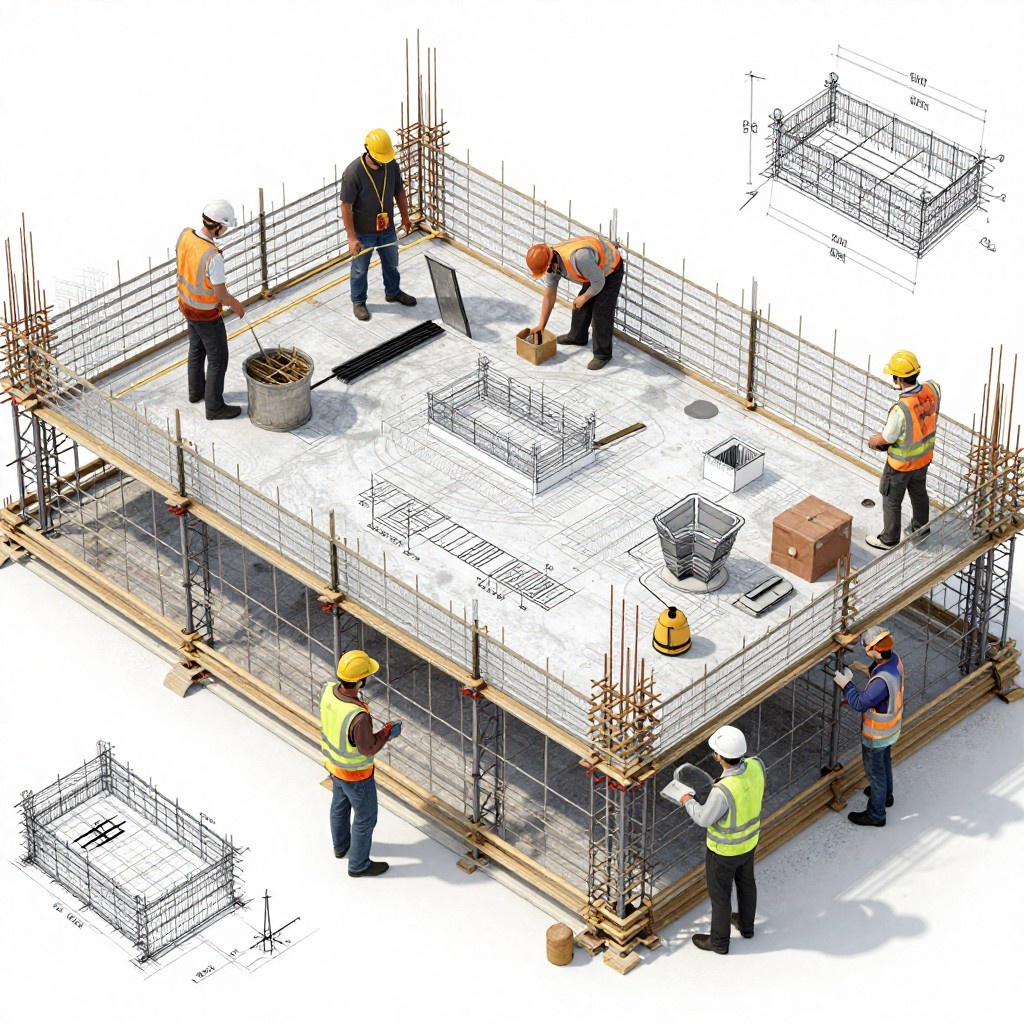Building Information Modeling, commonly known as BIM, represents a paradigm shift in the architecture, engineering, and construction (AEC) industry. It is more than just a technology; it's a methodology that integrates data, processes, and tools to enhance collaboration and decision-making throughout the lifecycle of a building project. BIM allows stakeholders to visualize the entire project in a digital format before construction begins, reducing errors, improving efficiency, and ensuring better outcomes. In a world where construction projects are becoming increasingly complex, BIM has emerged as an essential tool for modern construction, revolutionizing how buildings are designed, built, and managed.
History of BIM
The concept of BIM might seem modern, but its roots trace back several decades. The idea of creating a digital representation of a building's physical and functional characteristics originated in the 1960s and 70s when pioneers in computer-aided design (CAD) began exploring ways to use computers to model building structures. The term "Building Information Modeling" was coined in the early 2000s, but the foundational concepts were in development long before that.
The origins of BIM are often credited to research and developments in the United States and Europe. Early work in the 1970s by researchers like Charles Eastman, who is often regarded as one of the fathers of BIM, laid the groundwork for what would eventually become BIM. His work on building product models at Carnegie Mellon University in the late 1970s was a precursor to modern BIM. The 1980s saw the development of software tools that allowed for the creation of 3D models, setting the stage for the BIM revolution.
The Evolution of BIM Software
The journey from simple 2D CAD drawings to sophisticated 3D BIM models has been marked by several key milestones. In the early days, architects and engineers relied on 2D CAD software, which was limited in its ability to capture the complexities of modern construction projects. The introduction of 3D modeling software in the 1980s was a significant leap forward, allowing designers to visualize buildings in three dimensions and make more informed decisions.
One of the first notable BIM software was ArchiCAD, developed by the Hungarian company Graphisoft in 1987. ArchiCAD was groundbreaking as it allowed architects to create a virtual building model that included both geometric and functional data. This innovation marked the beginning of BIM as we know it today.
The 1990s and early 2000s saw the rise of other influential BIM software, including AutoCAD by Autodesk, Revit, and Bentley Systems’ MicroStation. Autodesk's acquisition of Revit in 2002 was a turning point, as Revit was designed specifically for BIM, allowing for the seamless integration of 3D modeling, data management, and collaboration tools. This period also saw the development of industry standards, such as the Industry Foundation Classes (IFC), which enabled different BIM software to work together more effectively.
The evolution of BIM software did not stop at 3D modeling. Today, BIM encompasses 4D (time), 5D (cost), and even 6D (sustainability) modeling, providing a comprehensive toolset for managing every aspect of a building's lifecycle.
BIM History Timeline
- 1960s-1970s: Early research and development of building product models, particularly by Charles Eastman.
- 1982: Autodesk releases AutoCAD, a key development in 2D CAD technology.
- 1987: Graphisoft releases ArchiCAD, the first BIM software that allows virtual building modeling.
- 1992: The term "Building Information Modeling" is first introduced in a paper by G.A. van Nederveen and F.P. Tolman.
- 1997: Revit Technologies is founded and begins developing Revit, a software specifically designed for BIM.
- 2002: Autodesk acquires Revit, marking a significant milestone in the adoption of BIM in the AEC industry.
- 2003: The National Institute of Building Sciences (NIBS) establishes the buildingSMART Alliance to advance open standards for BIM.
- 2007: The UK government mandates the use of BIM for public projects, driving widespread adoption.
- 2010s: BIM evolves to include 4D (time), 5D (cost), and 6D (sustainability) dimensions.
- 2020s: BIM becomes the standard in construction, with advancements in AI, machine learning, and cloud computing further enhancing its capabilities.
Early Beginnings of Building Information Modeling
Origins of BIM and Precursors
The origins of BIM are closely tied to the development of CAD systems in the 1960s and 70s. Researchers like Charles Eastman were exploring ways to use computers to model buildings in more detail than was possible with traditional 2D drawings. These early efforts laid the foundation for the development of BIM, which sought to integrate various aspects of a building project into a single, cohesive model.
Transition from 2D to 3D Modeling
The transition from 2D to 3D modeling was a critical step in the evolution of BIM. 2D CAD drawings were limited in their ability to represent the complexity of modern buildings. The development of 3D modeling software in the 1980s allowed architects and engineers to create more accurate and detailed representations of their designs, paving the way for the development of BIM
Key Developments in the 1990s
The 1990s were a period of significant innovation in BIM technology. Software like ArchiCAD and Revit introduced the concept of a "virtual building," where all aspects of a building's design and construction could be modeled in a single digital environment. This period also saw the development of industry standards, such as the IFC, which enabled different BIM software to work together more effectively.
Conceptualization of BIM
By the late 1990s and early 2000s, the concept of BIM as we know it today began to take shape. The term "Building Information Modeling" was first used in a paper by G.A. van Nederveen and F.P. Tolman in 1992, and it quickly gained traction as a way to describe the integration of 3D modeling, data management, and collaboration tools into a single cohesive process.
Case Studies of Early BIM Adoption
One of the most notable early adopters of BIM was the Sutter Health project in California, which began in the early 2000s. The project involved the construction of several large healthcare facilities and was one of the first major projects to use BIM extensively. By adopting BIM, Sutter Health was able to reduce construction errors, improve collaboration among stakeholders, and complete the project on time and within budget.
Another significant early BIM project was the renovation of the Sydney Opera House in Australia. The project required careful planning and coordination to preserve the building's iconic design while upgrading its facilities. BIM played a crucial role in ensuring that the renovation was completed successfully, with minimal disruption to the building's operations.
Current Trends in BIM
Today, BIM is evolving rapidly, driven by advancements in technology and the increasing complexity of construction projects. Some of the current trends in BIM include:
- Integration with AI and Machine Learning: BIM software is increasingly incorporating AI and machine learning algorithms to automate tasks, improve accuracy, and provide predictive insights.
- Cloud-Based Collaboration: The use of cloud-based platforms for BIM is growing, enabling real-time collaboration among stakeholders regardless of location.
- Sustainability and Green Building: BIM is being used to design and manage more sustainable buildings, with a focus on energy efficiency, resource management, and environmental impact.
- Digital Twins: The concept of a digital twin, a virtual replica of a physical building, is becoming more prevalent in BIM. Digital twins are used for monitoring and managing buildings throughout their lifecycle.
Future of BIM
The future of BIM is bright, with the technology expected to continue evolving and expanding in scope. Some of the key trends that are likely to shape the future of BIM include:
- Increased Use of AI and Automation: AI and automation will play an increasingly important role in BIM, enabling more efficient design and construction processes. Tasks that currently require manual input, such as clash detection and quantity takeoffs, could be automated, freeing up time for architects and engineers to focus on more complex tasks.
- Greater Integration with IoT: The Internet of Things (IoT) will become more closely integrated with BIM, allowing for real-time monitoring and management of building systems. This will enable more proactive maintenance and improve the overall efficiency of buildings.
- Expansion into New Industries: While BIM is currently most widely used in the construction industry, its applications are expanding into other sectors, such as infrastructure, transportation, and manufacturing. This expansion will drive further innovation and adoption of BIM technology.
- Enhanced Collaboration and Data Sharing: The future of BIM will see even greater collaboration and data sharing between stakeholders. Open standards and cloud-based platforms will facilitate seamless communication and coordination, leading to more successful projects.
Conclusion
Building Information Modeling has come a long way since its early beginnings in the 1960s and 70s. From its origins as a research concept to its current status as an essential tool in the construction industry, BIM has revolutionized how buildings are designed, built, and managed. As technology continues to evolve, BIM will only become more integral to the AEC industry, offering new opportunities for efficiency, collaboration, and sustainability.
BIM's significance in the industry cannot be overstated, and as it continues to evolve, it will undoubtedly play an even more critical role in shaping the future of construction. Whether you're an architect, engineer, contractor, or building owner, understanding the history and future of BIM is essential for staying ahead in an increasingly competitive industry.




